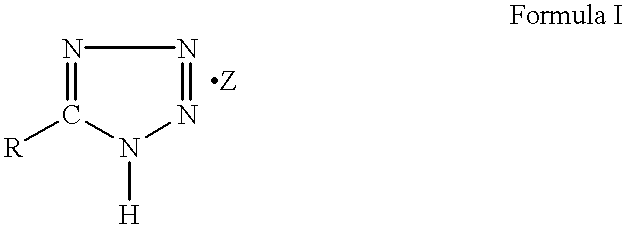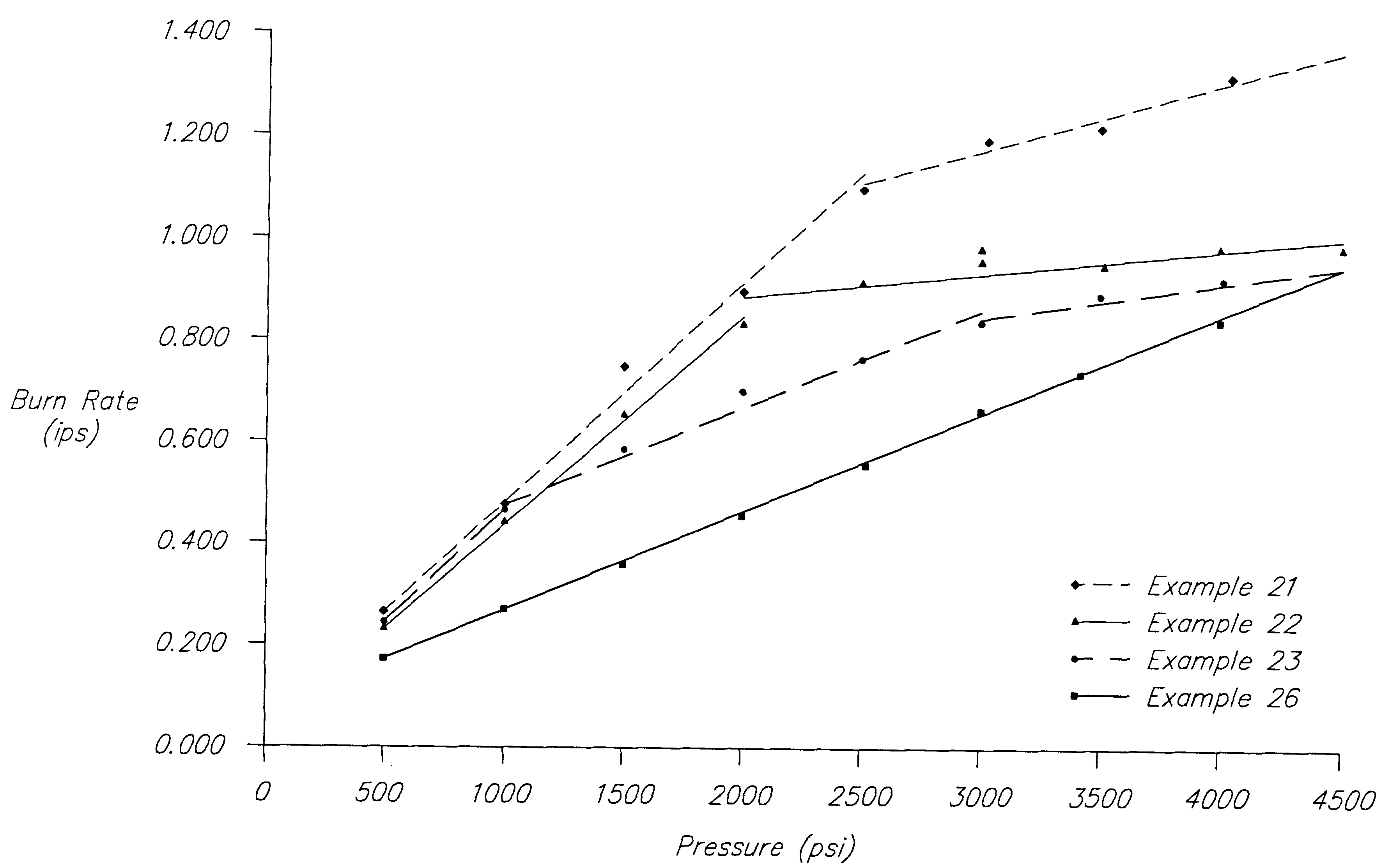High gas yield non-azide gas generants
- Summary
- Abstract
- Description
- Claims
- Application Information
AI Technical Summary
Benefits of technology
Problems solved by technology
Method used
Image
Examples
example 16--
Illustrative
Phase-stabilized ammonium nitrate (PSAN) consisting of 85 wt % ammonium nitrate (AN) and 15 wt % potassium nitrate (KN) was prepared as follows. 2125 g of dried AN and 375 g of dried KN were added to a heated jacket double planetary mixer. Distilled water was added while mixing until all of the AN and KN had dissolved and the solution temperature was 66-70.degree. C. Mixing was continued at atmospheric pressure until a dry, white powder formed. The product was PSAN. The PSAN was removed from the mixer, spread into a thin layer, and dried at 80.degree. C. to remove any residual moisture.
example 17--
Illustrative
The PSAN prepared in example 16 was tested as compared to pure AN to determine if undesirable phase changes normally occurring in pure AN had been eliminated. Both were tested in a DSC from 0.degree. C. to 200.degree. C. Pure AN showed endotherms at about 57.degree. C. and about 133.degree. C., corresponding to solid-solid phase changes as well as a melting point endotherm at about 170.degree. C. PSAN showed an endotherm at about 118.degree. C. corresponding to a solid-solid phase transition and an endotherm at about 160.degree. C. corresponding to the melting of PSAN.
Pure AN and the PSAN prepared in example 16 were compacted into 12 mm diameter by 12 mm thick slugs and measured for volume expansion by dilatdmetry over the temperature range -40.degree. C. to 140.degree. C. When heating from -40.degree. C. to 140.degree. C. the pure AN experienced a volume contraction beginning at about -34.degree. C., a volume expansion beginning at about 44.degree. C., and a volume cont...
example 18
A mixture of PSAN and BHT.2NH.sub.3 was prepared having the following composition in percent by weight: 76.43% PSAN and 23.57% BHT.2NH.sub.3. The weighed and dried components were blended and ground to a fine powder by tumbling with ceramic cylinders in a ball mill jar. The powder was separated from the grinding cylinders and granulated to improve the flow characteristics of the material. The granules were compression molded into pellets on a high speed rotary press. Pellets formed by this method were of exceptional quality and strength.
The burn rate of the composition was 0.48 inches per second at 1000 psi. The burn rate was determined by measuring the time required to burn a cylindrical pellet of known length at a constant pressure. The pellets were compression molded in a 1 / 2" diameter die under a 10 ton load, and then coated on the sides with an epoxy / titanium dioxide inhibitor which prevented burning along the sides.
The pellets formed on the rotary press were loaded into a gas ...
PUM
 Login to View More
Login to View More Abstract
Description
Claims
Application Information
 Login to View More
Login to View More - R&D
- Intellectual Property
- Life Sciences
- Materials
- Tech Scout
- Unparalleled Data Quality
- Higher Quality Content
- 60% Fewer Hallucinations
Browse by: Latest US Patents, China's latest patents, Technical Efficacy Thesaurus, Application Domain, Technology Topic, Popular Technical Reports.
© 2025 PatSnap. All rights reserved.Legal|Privacy policy|Modern Slavery Act Transparency Statement|Sitemap|About US| Contact US: help@patsnap.com



